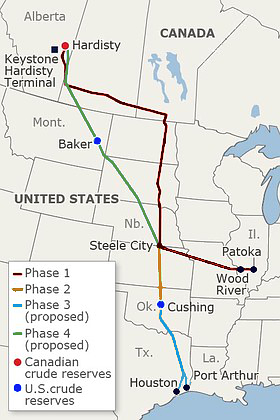oil: moving it
Nov. 26, 1939: Oil transported by tank cars. Though oil had been shipped in the United States since the 1860s, dozens of commodities made their way around using tank cars in the 1930s. During World War II, tank cars almost exclusively shipped oil as part of the war effort. Photo: Wood Aerial Surveys. NYTimes Archive.
It was always explained to me that the US Interstate system was primarily a Department of Defense project, meant to extend to all corners of the country with a military-specification super-highway connecting dispersed military bases, plants, installations and depots, rather than concentrating such facilities in one or two key sites in the country. This was a response to the fear that Chicago during the Second World War constituted a key target as the nation's railways all converged there: take out the Chicago railyards and transportation would be frozen. Chicago wasn't bombed, but the cold war and the threat of larger weapons with greater reach kept the threat alive.
Above is an image from 1939: oil transported by rail. Oil is essential to the prosecution of war. And as Al Gore said in an interview yesterday on CBC oil is oil, once it is on its way, as a commodity, it doesn't matter where it goes (I paraphrase). He pointed out that when Alberta bitumen gets to the Texas coast, it will be sold on, and that is the critical factor for approval of the Keystone pipeline. This isn't a great fit with the desire for energy security, which is how pipeline projects are sold to us – no more reliance on dodgy sources in the middle east or the Gulf of Mexico, North America can find and refine and consume its own product. Gore was suggesting that the raw bitumen is extracted in Canada, refined in Texas and then exported, a different proposition entirely.
On the map the Keystone pipeline appears to go right down I-29 to Kansas and then I-35 to the coast. I remember this route, there is a little jog on I-70 through Topeka to get from I-29 to I-35. So not as straight as the proposed pipeline route. Whatever. Perhaps rather than going through farmers' fields and disrupting their herds, woodlots and endangered species, the pipelines should go down the already disturbed landscape that is the Inter-state highway system. Those freeways are like culverts with huge gravel verges, surely a pipeline could fit alongside them. We might start to think of the interstate system not as a transportation network but an industrial-military network of channels carrying vital resources for the defence of the country. This actually seems more likely than the Interstate as a traveller's joy.


